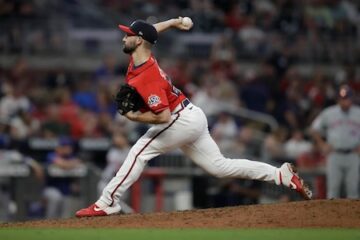2015 Fantasy Baseball: When to Cut Bait on Injured Players

Stashing players in your team’s allotted DL spot (or two) is a winning strategy in fantasy baseball. If you manage it right, you could have a present (activated player) waiting for you weeks down the line. It’s almost like sending yourself a post card while you’re backpacking through Europe. Or walking through a Stargate or something.
There comes a point in any season when you must decide which players are worth holding on to. When I set up a league, I always include two DL spots, but not all leagues or sites offer more than one, and some don’t have any at all. For owners in the latter two, having an injured player on your roster limits your flexibility and hinders your chance of increasing your counting stats in roto leagues or winning a head-to-head matchup.
Decisions need to be made, and some players have to get the ax.
As the season enters the second week of August, more and more MLB teams are practicing caution with their players. Whether it be because they are saving him for a playoff run, or because he is a prized prospect and they see no need to force the issue, teams will be keeping closer tabs on their injured stars.
As fantasy owners, we need to speculate on the player’s timetable to return, evaluate whether they can contribute down the stretch and see if there is a player on the waiver wire who can help our team more at the current moment.
Not all situations are the same. If you are in first place, you can afford to stash David Wright till next week in hopes that everything goes smoothly with his rehab. But if you are in head-to-head matchup that could determine whether you make the playoffs or not, wasting a roster spot on a player that can’t help you win now isn’t a smart move.
For pitchers, you have to calculate their future value even more. My mantra will always be: hitting > pitching. If you subscribe to this theory, then you’ll agree that stashing a hitter will benefit you more than stashing a pitcher.
Why is that?
No matter what format you play in, simple math says that a starting pitcher can make no more than two starts per week. A hitter can play in a maximum of seven games a week, even more if there’s a double-header, which there will be as teams start making up rainouts from the spring. If a pitcher takes the mound twice this week, he’ll only pitch once next week. So in two weeks, you get three starts max. Again, using the same remedial math, a hitter has the potential to suit up 14 times.
When you’re inching towards a roto title, or trying to eke into the head-to-head playoffs, EVERY. GAME. MATTERS. These future calculations are important.
Stashing A.J. Burnett for the home stretch? While he’s making nice progress, he’s still not expected back before September. If he returns September 1, that only gives him six or seven starts for the rest of the season. Now take those starts and reduce them by two or three, because that’s how many games it could take for him to get back into the swing of things. And that’s optimistic. There’s no guarantee he will. How many times have we seen a player announce return date after return date only to be completely shut down when the rehab process proves unsuccessful? I’ve stashed guys like this before. Using up a roster spot on a player who you never end up getting to activate is like a punch in the gut.
These are all things to consider when picking up injured players, as well as making decisions on the disabled players you already have on your roster.
My next article will be a follow up to this idea, listing specific players you should be cutting and who you can replace them with, so be on the look out for that!






1 Comment
I hear this bad logic way too often: hitters are more valuable than pitchers because they play in more games. That is a logical fallacy because you are comparing apples to oranges. Hitters contribute only to hitting stats, while pitchers contribute only to pitching stats. All SPs pitch no more than three times in two weeks. The fact that a hitter can appear in fourteen games in two weeks has no affect whatever on SPs, since hitters cannot contribute to your pitching stats. A SP pitching three times per week can affect your pitching stats at the exact same rate of impact that a hitter can affect hitting stats when playing every day. There are other criteria to use when deciding whether to drop a SP from your DL: whether, say, in the final month, the SP has good or bad matchups; whether the SP may need a couple games to sharpen up after a significant injury (there may not be time for that); whether a SP may get shut down in a game earlier than usual because his team is out of the playoff hunt; whether your fantasy team needs more improvement in hitting categories than in pitching ones; how close you are to reaching your maximum innings for starters; etc. You have to make tough decisions when you have one DL slot and more than one DL’d player, but consider hitters only on hitting terms and pitchers on pitching terms in relation to what your team needs.